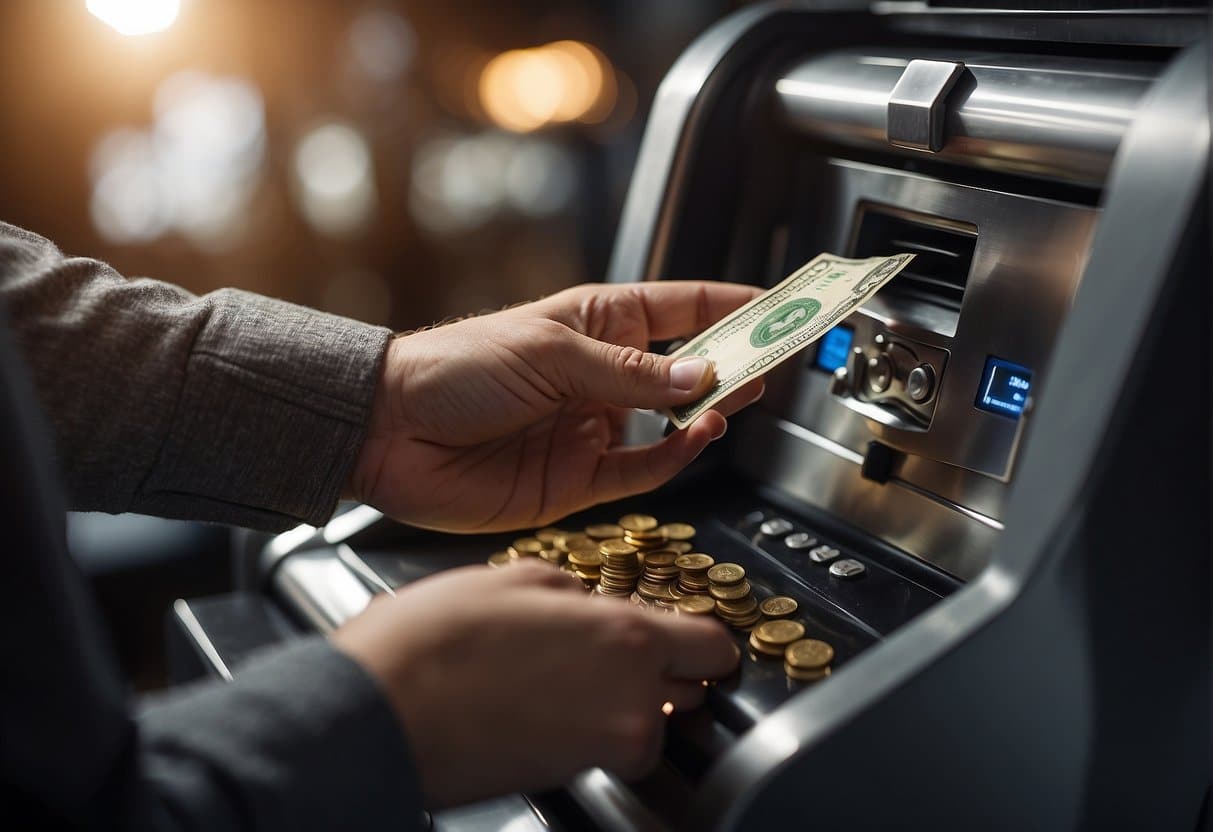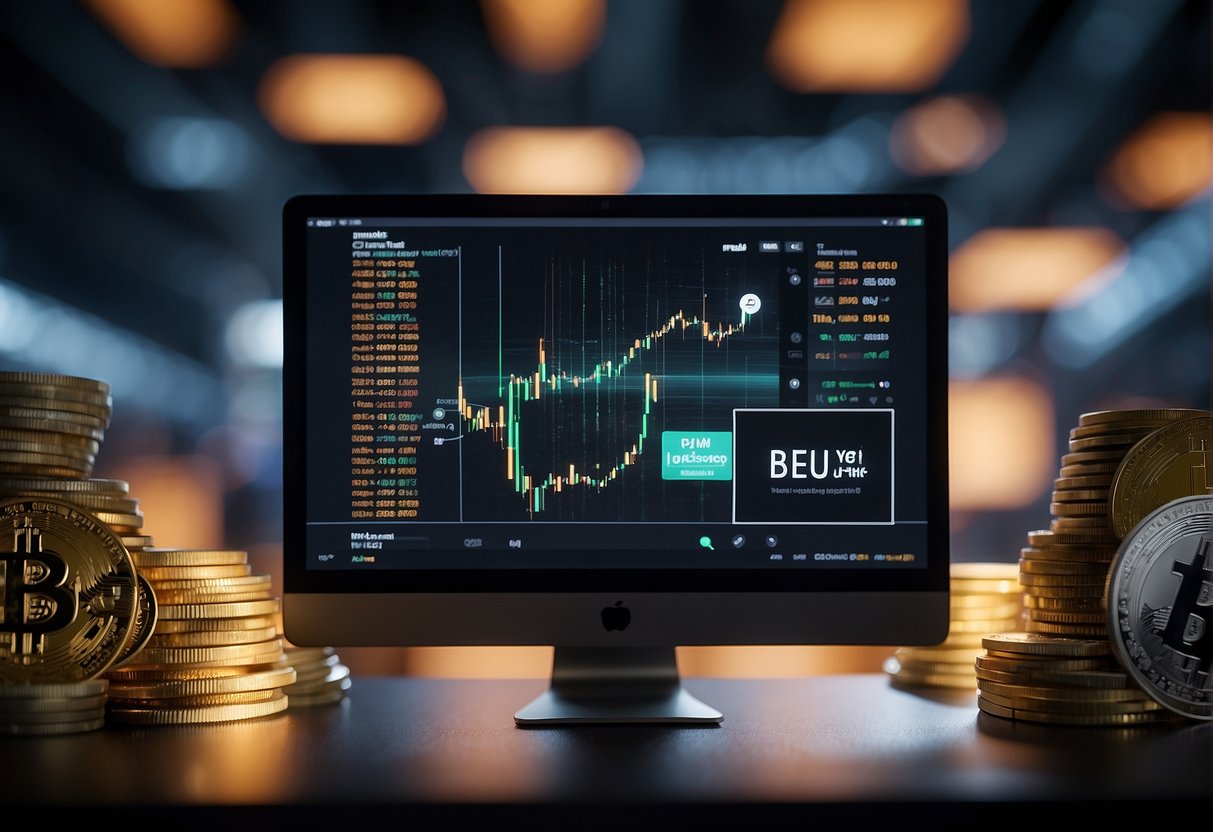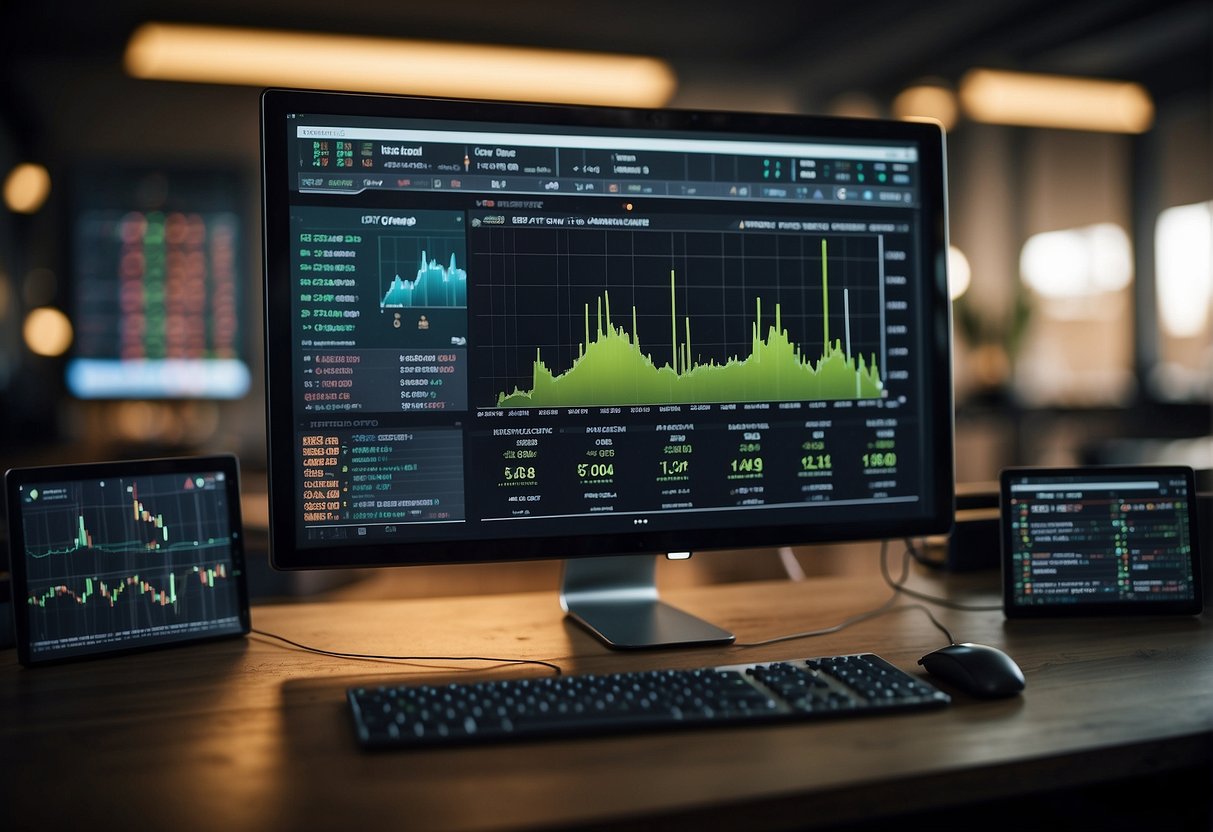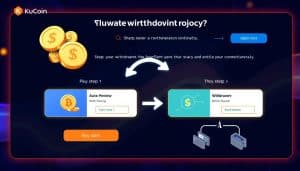Buying tokens in the cryptocurrency market can be a rewarding experience, but it requires careful planning and knowledge. Tokens represent a stake in a blockchain project, and, unlike cryptocurrencies such as Bitcoin or Ethereum, they can offer additional benefits like voting rights or a share in the project’s profits. Before you dive into purchasing tokens, it’s essential to understand what they are, their purpose, and the risks involved.
Starting with crypto exchange platforms is a crucial step. These platforms facilitate the buying, selling, and trading of tokens. It’s important to choose one that is reputable and offers the tokens you’re interested in. To make your first token purchase, you’ll need to set up a crypto wallet, which is where you’ll store your digital assets securely. Once your wallet is ready, you can connect it to an exchange, choose your tokens, and complete the transaction.
Table of Contents
ToggleKey Takeaways
- Tokens represent a stake in blockchain projects and come with various benefits.
- Setting up a secure crypto wallet is essential before purchasing tokens.
- Choosing a reputable exchange platform is key for a smooth transaction process.
Understanding Cryptocurrency Tokens
Cryptocurrency tokens are the fuel of the blockchain network, each operating within a digital ecosystem. First, it’s important to distinguish between a token and a cryptocurrency like Bitcoin or Ethereum. Cryptocurrencies are native coins of their own blockchain networks, made for direct transactions. Tokens, on the other hand, are created on existing blockchains using smart contracts, enabling them to represent diverse assets or utilities.
| Property | Token | Cryptocurrency |
|---|---|---|
| Functionality | Access to services, represent assets | Medium of exchange, store of value |
| Blockchain | Exist on pre-existing blockchains like Ethereum | Have their own dedicated blockchain |
| Creation | Through smart contracts | Through mining or pre-defined by network rules |
When you buy tokens, you’re essentially acquiring digital assets that can have multiple uses. They might grant you access to services within that ecosystem, represent voting power, or even stand in for physical objects in the digital sphere.
A token’s value can fluctuate based on its demand and utility within its native platform. Before purchasing tokens, ensure you understand their purpose and the strength of the underlying project. Research the team, the token economics, and the community support that sustains its network.
Cryptocurrency tokens vary widely, from utility tokens that you might use to obtain services on a platform, to security tokens that could be analogues to stocks. A robust example, Ethereum’s ERC-20 tokens, are a standard for creating fungible tokens that are interoperable across products and services within its ecosystem. Always exercise due diligence and obtain tokens through reputable exchanges and platforms. See a straightforward guide on how to buy tokens for beginners.
Remember, investing in tokens is a variant of investing in the future potential of blockchain ventures and innovations. Thus, it is crucial to stay informed and approach each purchase thoughtfully.
Getting Started with Crypto Exchange Platforms
When you’re entering the world of digital currencies, selecting a trustworthy crypto exchange is your first step. Look at platforms like Coinbase, known for their user-friendly interfaces and a broad range of available cryptocurrencies.
Choose Your Exchange
- Security: Ensure it has a strong reputation for security.
- Ease of Use: The interface should be intuitive for buying and selling.
- Payment Methods: Check for compatibility with your preferred payment method(s).
Set Up Your Account
Once you’ve chosen an exchange, you’ll need to create an account. This usually involves:
- Providing personal information.
- Completing a verification process.
Payment Methods
Most exchanges accept various payment methods. You might use:
- Bank Transfers: Often used for large deposits.
- Credit Card: Quick but may come with higher fees.
- PayPal/Apple Pay: Handy for those who use these services in their daily transactions.
- Debit/Credit Card: Common for direct purchases.
- Services like Revolut are also sometimes an option, merging traditional banking with cryptocurrency exchanges.
Making Your First Deposit
- Navigate to the deposit section of your chosen exchange.
- Select your payment method.
- Follow the prompts to deposit funds.
Remember, always review any fees associated with different payment methods. Conducting due diligence before committing to an exchange will set you on the right path in the crypto space.
Choosing the Right Tokens to Invest In
When diving into cryptocurrency investments, you must select tokens that align with your investment strategies and risk tolerance. Start by reviewing the token’s underlying technology and use case. For instance:
- Ethereum (ETH): Known for smart contracts and decentralized applications.
- Binance Coin (BNB): Powers transactions on the Binance Exchange and its ecosystem.
- Polygon (MATIC): Offers a scalable network for Ethereum-based projects.
- Tether (USDT): A stablecoin pegged to the US dollar, aiming to offer stability in a volatile market.
- Dogecoin (DOGE): Initially started as a meme but now gaining broader acceptance for payments.
- TamaDoge (TAMA): A newer entrant, typically categorized as a meme coin with a growing community.
Here is a concise guide to help you in the decision-making process:
- Evaluate the purpose of the token:
- Is it a utility token, providing a specific use within its ecosystem?
- Or is it a governance token that gives you voting rights?
- Research the market performance:
- Look for consistent growth or stability.
- Check community and developer activity:
- Engaged developers and a supportive community can indicate a healthy ecosystem.
- Review tokenomics:
- Consider the total supply and distribution – a limited supply may mean a higher potential value.
- Read Whitepapers and Technical Docs:
- Understand the project’s vision and technical foundations.
When considering an investment in a token like TamaDoge, remember its value can be speculative, and it’s essential to invest only what you’re willing to lose. Conversely, when approaching widely recognized tokens such as ETH, BNB, MATIC, or USDT, you’re dealing with more established and potentially less volatile investments. Keep in mind that investing always carries risk, and it’s crucial to conduct thorough due diligence.
Exploring Initial Coin Offerings (ICOs)
In the dynamic world of cryptocurrency, Initial Coin Offerings (ICOs) present a compelling opportunity for you to invest in new and upcoming blockchain projects. Understanding the process, from what an ICO is to scrutinizing white papers, is crucial for informed investments.
What Is an ICO?
An ICO is a fundraising mechanism where new projects sell their underlying crypto tokens in exchange for Bitcoin, Ethereum, or other cryptocurrencies. It’s akin to an Initial Public Offering (IPO) but for digital tokens. These events offer you the chance to purchase tokens at an early stage, potentially gaining in value over time as the project develops.
Finding Upcoming ICO Listings
To discover new ICOs, frequent reputable cryptocurrency news websites and platforms that specialize in announcements of upcoming ICO listings. These listings provide you with key information, such as the start and end date of the ICO, the type of tokens offered, and the terms of the sale. Staying up-to-date with these listings enables you to identify compelling new projects with investment potential.
Evaluating ICOs and White Papers
The white paper is your essential guide to understanding an ICO’s intent, technology, and business plan. Carefully evaluate the white paper for:
- Project Viability: Detailed explanation of the problem the project addresses and its proposed solutions.
- Token Economics: Clear token distribution plan, including total supply and use of funds.
- Team Credentials: Backgrounds of the team members to assess the project’s ability to succeed.
Your investment should be informed by thorough research, including the review of technical specifics, development roadmaps, and the ICO’s legal standing. Well-evaluated ICOs can distinguish promising projects from less viable ones, guiding you toward more secure and potentially profitable investments.
Setting Up a Crypto Wallet
Before purchasing cryptocurrency tokens, you need a secure place to store them—a crypto wallet. A crypto wallet is a digital tool that interacts with various blockchain networks. It holds your private keys—the critical information used to authorize outgoing transactions on the blockchain network. Think of it as your crypto bank account, with wallets varying from software-based Metamask to physical hardware wallets.
Here’s a concise guide to help you through the setup process:
- Choose Your Wallet Type
- Software Wallets: Convenient and usually free. Metamask is a popular browser extension with an intuitive setup.
- Hardware Wallets: Store your tokens offline for added security, though they can cost around $100.
- Setting Up Metamask
- Install the Metamask extension for your browser.
- Create your wallet and record your seed phrase in a secure location; this is vital for wallet recovery.
- Taking Security Measures
- Never share your private keys or seed phrase.
- Use strong, unique passwords and consider two-factor authentication if available.
- Transferring and Managing Cryptocurrency Tokens
- Send a small amount of cryptocurrency to your wallet first to ensure everything works correctly.
- Keep regular backups of your wallet’s information.
Remember, while software wallets like Metamask are readily accessible via browser or phone app, they are only as secure as your device and internet practices. Hardware wallets, although an initial investment, offer better protection, especially if you’re handling large amounts of cryptocurrency.
Making Your First Token Purchase
When you’re ready to buy tokens, it’s important to approach the process methodically to ensure a smooth transaction. Here’s your step-by-step tutorial to guide you through buying your first cryptocurrency tokens.
Step 1: Choose a Wallet
First, you need a crypto wallet to store your tokens. Pick one that supports the currency you’re interested in and make sure it’s secure.
- Hardware Wallet: Offers robust security
- Software Wallet: Convenient for frequent transactions
Step 2: Select a Reliable Exchange
Find an exchange that best suits your needs. Look for one with a strong reputation, provides the tokens you want, and has reasonable fees.
- Popular exchanges: SoFi, Binance
- Meme coins: Exclusive platforms
Step 3: Connect Your Wallet
Connect your chosen wallet to the exchange. Always double-check the wallet address before any transactions.
Step 4: Purchase
Fund your account and proceed to buy the tokens.
- Payment methods: bank transfer, credit card
- Always review transaction details
Step 5: Transfer to Your Wallet
After buying, transfer the tokens to your wallet.
- Click “withdraw” in the exchange
- Set the correct network
- Enter your wallet address
Remember, investing in cryptocurrency involves risks. Start small, and only invest what you can afford to lose. Maintain a neutral and analytical approach, focusing on informed decisions rather than speculation. Happy trading!
Navigating the Crypto Market
When you’re poised to dive into the world of cryptocurrencies, understanding the intricacies of the market is crucial. The crypto market is vast and ever-changing, with market capitalization reflecting the total value of all cryptocurrencies in existence. This figure is essential for gauging the size and relevance of different tokens.
Start by assessing liquidity, which indicates how easily a token can be bought or sold at a stable price. Higher liquidity suggests a more active market and often, less price manipulation. When selecting top tokens to buy, consider not only their market cap but also their performance, innovation, and use case.
Remember, investing in cryptocurrencies is a risky investment. The prices are volatile and can fluctuate wildly. It’s crucial for you to do your research. A step-by-step approach might look like this:
- Identify your investment goals
- Research and compare top-performing tokens
- Study historical performance and market trends
- Consider the liquidity of the tokens on various exchanges
- Invest amounts you’re comfortable with
Key Metrics:
| Metric | Importance |
|---|---|
| Market Cap | Represents a token’s market value |
| Liquidity | Measures ease of trading without affecting price |
| Token Performance | Historical data can signal potential futures |
Never forget that knowledge is your best asset in the crypto market. Stay updated on financial news, technological advances, and market sentiments. Your journey in cryptocurrency should be informed and measured to help navigate the complex terrain with greater ease.
Investing Strategies for Crypto Investors
As you venture into the realm of cryptocurrency, it’s essential to establish clear investing strategies. Whether you’re an individual investor, part of a family office, or representing institutional investors, a well-defined approach is key to navigating the volatile crypto market. Here are specific strategies to consider:
Diversification
- Spread your investments across various cryptocurrencies to mitigate risk.
Dollar-Cost Averaging (DCA)
- Invest a fixed dollar amount in a cryptocurrency periodically, regardless of its price.
- Helps in reducing the impact of volatility.
Value Averaging
- Adjust your investment amount based on the performance of your cryptocurrency.
Understanding Rewards and APY
- Look for opportunities to earn passive income through staking or other reward mechanisms.
- Annual Percentage Yield (APY) is a critical figure, indicating the returns you can expect on your staked assets.
Staking for Passive Income
- Engage in staking if you are prepared to hold your assets for a longer term.
- Earn rewards by participating in the network security and operations.
Remember, these strategies are not foolproof and come with their own sets of risks. It’s crucial to conduct thorough research and continuously monitor the market trends before making any investment decisions.
By staying informed and cautious, you can better position yourself to reap the potential benefits of the burgeoning crypto ecosystem.
Securing and Managing Your Crypto Assets
When purchasing tokens, it’s essential to secure and manage your crypto assets effectively. Your first step is to select a reliable cryptocurrency exchange with a strong reputation for security. Look for exchanges that implement robust measures such as two-factor authentication (2FA) and are regulatory compliant with Know Your Customer (KYC) and Anti-Money Laundering (AML) checks.
Once you’ve purchased tokens, transfer them promptly to a crypto wallet for added security. There are two main types of wallets:
- Hot Wallets: Online-based wallets convenient for daily transactions.
- Cold Wallets: Offline storage like hardware wallets, ideal for the long-term store of value.
Cold wallets are generally safer as they are less susceptible to online hacking attempts. However, remember that unlike a traditional bank account, crypto assets are not protected by the FDIC. This means the onus of security rests entirely on you.
Here are some quick tips for managing your crypto assets:
- Always verify web addresses to avoid phishing.
- Use strong, unique passwords for different platforms.
- Consider using a hardware wallet to securely store your most valuable crypto assets.
- Regularly backup your wallet’s information offline in multiple locations.
By following these steps, you can significantly enhance the security of your cryptocurrencies, turning them into a sound and secure investment. Remember, the safety of your assets ultimately depends on the diligence and precautions you take in managing them.
Leveraging Crypto Platforms for Enhanced Trading
Leveraging your capital through crypto platforms can amplify your trading power significantly. In leveraging, you essentially borrow funds to increase your trading position beyond what would be possible with your existing capital alone. It’s a powerful tool in the crypto space, but it comes with increased risks as well as potential rewards.
For instance, OKX allows traders to engage in leverage trading, providing the opportunity to open larger positions in the market. Similarly, platforms like Uphold and SoFi offer tools that could potentially enhance your trading strategies. However, always remember that while leverage can increase your profits, it can also amplify your losses.
| Platform | Leverage Offered | Special Features |
|---|---|---|
| OKX | Up to 100x | Broad Market Access |
| Uphold | Platform Specific | Diverse Asset Support |
| SoFi | Competitive Rates | Integrated Personal Finance |
Robinhood and Coinbase Cloud are other noteworthy players, promoting an open financial system. They tend to provide user-friendly experiences, especially through their mobile apps, facilitating access to leverage and other crypto solutions.
When considering tokens like Tama Token or Tamadoge, it’s crucial to research and understand the unique aspects of these assets before using leverage. Leveraged trading platforms give you a more substantial position but require diligent risk management.
Remember, leverage is a double-edged sword—use it wisely to enhance your trading strategies in the crypto space. Always consider the risks and ensure you’re using leverage as a part of a well-thought-out trading plan.
Avoiding Common Pitfalls and Scams
When you’re venturing into the world of altcoins, your safety is paramount. Scams are prevalent, so vigilance is key. Here are ways to safeguard your investments:
- Verify Everything: Always do due diligence on the token’s background. Research the development team, whitepapers, and community feedback.
- Secure Your Investment: Use trusted wallets and exchanges, and never share your private keys or recovery phrases.
- Be Skeptical: If an offer seems too good to be true, it probably is. High returns promised in a short time might be a red flag.
Common Scams to Avoid:
| Scam Type | How to Avoid |
|---|---|
| Phishing | Don’t click on suspicious links. |
| Fake ICOs | Research the ICO thoroughly. |
| Ponzi Schemes | Be wary of guaranteed returns. |
| Rug Pulls | Investigate token liquidity and locks. |
Remember the age-old adage: “Not your keys, not your coins“. Only you should have access to your private keys.
- Use Trusted Sources: When looking to buy coins or tokens in an ICO, stick to well-known and reputable sources.
- Stay Informed: How to stay safe and avoid common Bitcoin scams is a topic that’s constantly updating. Keep an eye on the latest security measures.
By keeping these tips in mind, you can navigate the crypto market more securely. Always proceed with caution and prioritize the protection of your digital assets.
Frequently Asked Questions
In this section, we explore some of the most common inquiries about purchasing cryptocurrency tokens, their storage, and the potential risks involved.
What are the steps to purchase cryptocurrency tokens?
First, choose a cryptocurrency exchange or platform and create an account. Then, verify your identity as required, deposit funds (either fiat or crypto), and select the cryptocurrency token you wish to buy. Coinbase offers a user-friendly interface for buying and selling crypto assets.
Can I buy tokens using fiat currencies, and if so, how?
Yes, many exchanges allow you to buy tokens using fiat currencies. To do this, you’ll need to select a platform that supports fiat transactions, link your bank account or credit card, and use it to purchase the tokens directly. Platforms like Uniswap enable fiat to crypto transactions through integrations with third-party payment processors.
What should I look for in a platform when buying tokens?
You should ensure the platform is reputable, secure, and user-friendly. It should also support the specific tokens you’re interested in buying and offer competitive fees. Check whether it provides sufficient liquidity to facilitate your trades and is in compliance with applicable regulations.
Is it possible to buy tokens without an exchange, and what are the alternatives?
Yes, you can also buy tokens via peer-to-peer (P2P) trading platforms, directly from other individuals, or at a cryptocurrency ATM. Another alternative is using decentralized exchanges (DEXs) like PancakeSwap or token swap services.
How to store tokens safely after purchase?
After purchasing, you can store your tokens in a digital wallet. Consider using a hardware wallet for extra security, as it stores your private keys offline. Trust Wallet is one example of a wallet where you can safely manage and store a wide variety of tokens.
What are the risks involved in investing in tokens?
The risks include market volatility, liquidity issues, regulatory changes, and potential security threats to your digital assets. It is crucial to research thoroughly and only invest what you can afford to lose. Understanding the liquidity risks and the token’s market conditions is essential before investing.
























